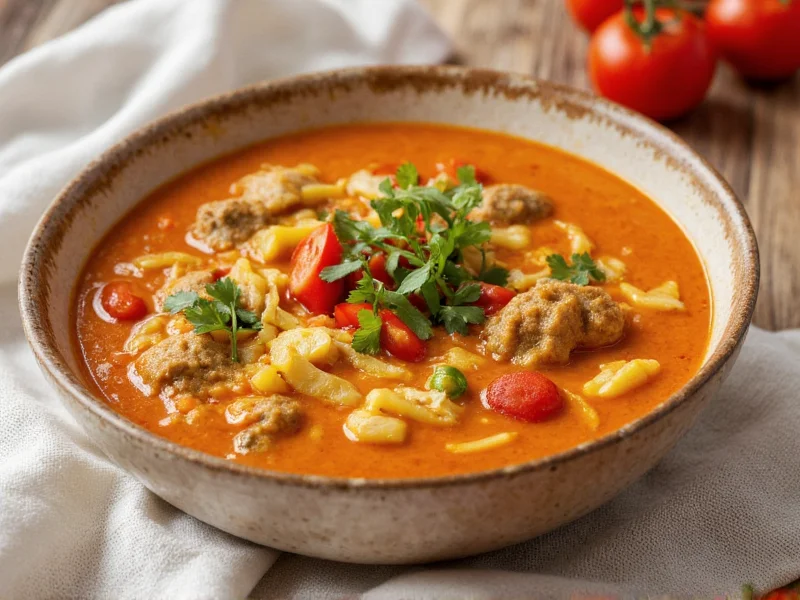Understanding the Shorba Soup Tradition
When searching for “shokra soups,” you’re likely encountering a common linguistic mix-up. The term “shorba” (from Persian شوربه) refers to a diverse family of soups enjoyed throughout regions spanning from Turkey to India. These nourishing broths form an essential part of culinary traditions where hospitality and communal dining hold cultural significance.
Unlike the non-existent “shokra soups,” authentic shorba varieties demonstrate remarkable regional diversity while sharing core preparation principles. Most traditional shorbas begin with a flavorful base of onions, garlic, and ginger sautéed in oil or ghee. Cooks then incorporate regional spices like cumin, coriander, turmeric, or saffron before adding vegetables, legumes, or proteins. The slow simmering process allows flavors to meld while creating a nourishing, easily digestible meal.
Common Shorba Variations by Region
Each culture has developed distinctive shorba recipes reflecting local ingredients and culinary preferences. Understanding these regional specialties helps clarify why “shokra soups” isn’t a standard culinary category.
| Region | Signature Shorba | Key Ingredients | Cultural Context |
|---|---|---|---|
| Middle East | Shorbat Adas (Lentil Soup) | Red lentils, cumin, lemon, olive oil | Served during Ramadan for iftar meals |
| South Asia | Shorba Murgh (Chicken Soup) | Chicken, ginger, garlic, garam masala | Traditional remedy for colds and recovery |
| Central Asia | Shorpa (Meat Soup) | Lamb, potatoes, carrots, cilantro | Served in communal bowls during celebrations |
| North Africa | Harira (Tomato-Lentil Soup) | Tomatoes, lentils, chickpeas, cinnamon | Essential for breaking Ramadan fast |
Why “Shokra Soups” Isn’t a Valid Culinary Term
Linguistic analysis reveals several reasons why “shokra soups” doesn’t appear in culinary literature or professional cooking resources:
- Phonetic confusion: The Arabic/Persian “shor” sound often gets misheard as “shok” by English speakers
- Spelling variations: Transliteration differences (shorba, shorwa, shorbat) create search confusion
- Brand misuse: Some commercial products incorrectly use “shokra” to sound exotic
- Cultural appropriation: Non-native speakers sometimes alter traditional names unintentionally
Professional chefs and culinary historians consistently reference “shorba” rather than “shokra” when discussing these traditional soups. Reputable cooking schools, culinary institutes, and food anthropology research all use the correct terminology when documenting these soup traditions.
How to Find Authentic Shorba Recipes
If you’re searching for genuine shorba recipes rather than non-existent shokra soups, consider these research strategies:
- Use precise terminology: Search for “shorba recipe” plus specific regional terms (Persian shorba, Turkish corba, Indian shorba)
- Consult cultural sources: Look for recipes from chefs with authentic cultural connections to the cuisine
- Check culinary institutions: Resources from organizations like the International Association of Culinary Professionals provide verified recipes
- Verify ingredient authenticity: Traditional shorbas rarely contain ingredients unavailable in their region of origin
When evaluating potential shorba recipes, watch for these authenticity markers that distinguish them from commercialized “shokra soups” products:
- Recipes specifying traditional spice blends rather than generic “curry powder”
- Cooking methods involving slow simmering rather than quick preparation
- Ingredient lists reflecting seasonal, regional availability
- Context about cultural significance and traditional serving methods
Common Misconceptions About Shorba Soups
Several misconceptions often surround searches for shokra soups. Understanding these helps clarify the authentic culinary tradition:
Misconception: Shorba soups are all spicy hot
Reality: While some regional varieties include heat, many traditional shorbas focus on aromatic spices rather than chili heat. Persian shorbas often feature subtle saffron notes, while Turkish versions emphasize mint and dill.
Misconception: All shorbas contain meat
Reality: Numerous vegetarian and vegan shorba variations exist, particularly in South Asian traditions where religious practices influence dietary choices. Lentil-based shorbas provide complete protein without animal products.
Misconception: Shorba is just another word for generic soup
Reality: Shorba represents specific preparation techniques and cultural contexts. The careful layering of flavors and traditional serving methods distinguish authentic shorba from Western-style soups.











 浙公网安备
33010002000092号
浙公网安备
33010002000092号 浙B2-20120091-4
浙B2-20120091-4